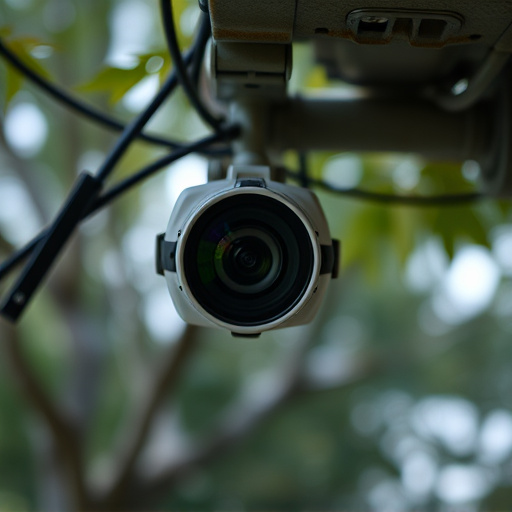Mini surveillance cameras (spy cameras) in apartments pose a significant privacy threat, as they can be hidden almost anywhere and remotely activated. Typically placed in hallways or individual units, these cameras can easily be installed by malicious individuals. To counter them, apartment owners and managers are turning to Radio Frequency (RF) technology, which enables specialized scanners to detect unusual emissions from hidden cameras. However, using RF detectors navigates legal and ethical challenges, requiring landlords to balance security needs with tenants' privacy rights, ensuring transparency, proportionality, and adherence to data protection regulations.
In today’s digital age, privacy concerns are paramount, especially in residential settings. This guide delves into the world of Mini Surveillance Cameras for Apartments and offers a comprehensive overview of detecting hidden devices using Radio Frequency (RF) technology. Understanding various camera types and their placement is crucial for tenants and landlords alike. We explore advanced detection techniques, highlighting legal considerations and ethical use cases to empower individuals with knowledge about mini surveillance cameras and their potential presence in shared living spaces.
- Understanding Mini Surveillance Cameras: Types and Placement in Apartments
- Unmasking Hidden Cameras: Detection Techniques Using Radio Frequency (RF) Technology
- Legal Considerations and Ethical Use of RF Detectors for Apartment Security
Understanding Mini Surveillance Cameras: Types and Placement in Apartments
Mini surveillance cameras, also known as hidden or spy cameras, have become increasingly sophisticated and compact, making them a common concern in apartments. These tiny devices can be concealed almost anywhere, from wall sockets to bookends, posing a significant threat to privacy. There are several types of mini surveillance cameras designed specifically for residential use, each with unique features and capabilities. Some are triggered by motion sensors, while others offer remote activation via smartphone apps, allowing intruders or potential threats to be recorded undetected.
In apartment settings, these cameras are often placed in strategic locations like hallways, common areas, or even within individual units. They can be easily installed by unscrupulous individuals seeking to invade privacy or gather sensitive information. Residents should remain vigilant and proactive, regularly inspecting their spaces for any signs of these devices. Staying informed about the latest trends in mini surveillance technology is essential for maintaining a secure living environment.
Unmasking Hidden Cameras: Detection Techniques Using Radio Frequency (RF) Technology
Unmasking hidden cameras has become a crucial aspect of privacy protection, especially in high-risk areas like apartments. With the proliferation of miniature surveillance cameras, often disguised as everyday objects, traditional visual searches have become ineffective. This is where Radio Frequency (RF) technology steps in as a powerful tool for detection. RF signals are omnipresent in modern devices, and advanced detectors can leverage these to uncover hidden cameras.
The process involves scanning for unusual RF emissions that may be specific to certain camera models or their associated accessories. By employing specialized RF scanners, professionals can detect miniature cameras hidden behind walls, inside appliances, or even embedded in furniture. This technology is particularly useful for apartment owners and managers looking to ensure tenant privacy by identifying any covert Mini Surveillance Cameras for Apartments.
Legal Considerations and Ethical Use of RF Detectors for Apartment Security
The use of radio frequency (RF) detectors for apartment security, particularly in detecting mini surveillance cameras, raises important legal and ethical considerations. While many countries have laws protecting privacy, the regulation of hidden cameras varies significantly. It’s crucial to understand these legal boundaries before employing RF detection techniques. Using such devices without proper authorization can constitute a breach of privacy and lead to serious legal repercussions.
Ethically, the use of RF detectors should balance apartment security needs with tenants’ rights. Landlords and property managers must ensure that any surveillance measures are transparent, proportional to the perceived threat, and respect individual freedoms. Ethical deployment includes informing residents about camera presence, limiting data collection, and adhering to data protection regulations. This approach fosters a secure environment while upholding the trust between tenants and their housing providers.
In conclusion, understanding the subtle yet potent nature of mini surveillance cameras in apartments necessitates a proactive approach to security. Unmasking these hidden devices through radio frequency (RF) technology offers a powerful tool for tenants and property managers alike. While legal considerations and ethical use are paramount, being informed about RF detection techniques empowers individuals to safeguard their privacy and create safer living spaces. By staying vigilant and utilizing cutting-edge tools like RF detectors, we can ensure peace of mind in our homes.
